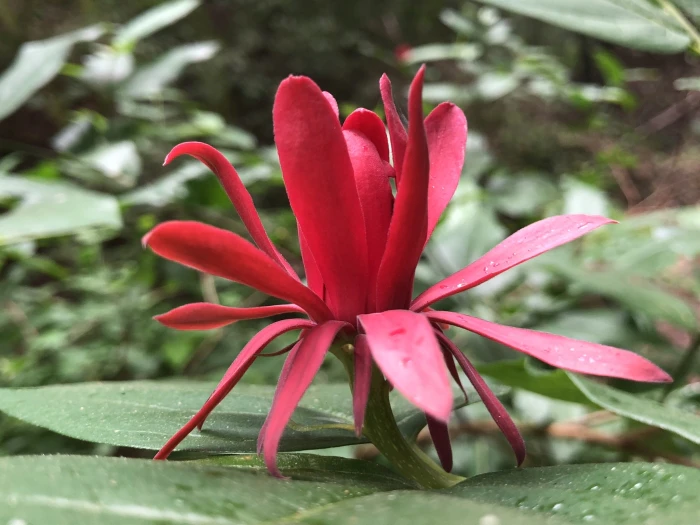Western Sweetshrub
(Calycanthus occidentalis)
Western Sweetshrub (Calycanthus occidentalis)
/
/

Don Loarie
CC BY 4.0
Image By:
Don Loarie
Recorded By:
Copyright:
CC BY 4.0
Copyright Notice:
Photo by: Don Loarie | License Type: CC BY 4.0 | License URL: http://creativecommons.org/licenses/by/4.0/ | Rights Holder: Don Loarie | Publisher: iNaturalist | Date Created: 2018-05-25T17:45:56Z |




























































Estimated Native Range
Climate Requirements for Orem, Utah
| This Plant | Your Site | Plant Suitability for Your Location | ||
|---|---|---|---|---|
| • Precipitation | 12" - 66" | 18" | Your precipitation may be insufficient for this plant. Irrigate N" / year. | Irrigate N" / year |
| • High Temp. | 64°F - 100°F | 92°F | Your summer temperatures are normal for this plant. | Excellent |
| • Low Temp. | 12°F - 47°F | 17°F | Your winter temperatures are normal for this plant | Excellent |
This plant should grow well at your location with about N inches per year (Y minutes per month) of irrigation.
Summary
Calycanthus occidentalis, commonly known as Western Sweetshrub, is a deciduous shrub native to the chaparral and woodland regions of California, particularly in the Sierra Nevada and Coastal Ranges. It can reach a height of up to 4 meters (13 feet) and is known for its aromatic, dark red to burgundy flowers. The shrub’s unique flowers, which bloom from late spring to early fall, are composed of petal-like structures called tepals that swirl around the center, each measuring 2–6 cm (0.8–2.4 in) in length and 0.5–1 cm (0.2–0.4 in) in width. When fully open, the flowers are about 5 cm (2 in) wide and are pollinated by beetles of the family Nitidulidae.
Western Sweetshrub is valued for its fragrant and showy flowers, which add a splash of color to gardens. It is often used in naturalistic plantings and as an accent in residential landscapes. The shrub is relatively easy to maintain, requiring medium amounts of water and thriving in both full sun and part shade. It prefers soils with slow to medium drainage. While it is not known for significant disease problems, it can suffer from root rot if planted in poorly drained soils. Gardeners should be aware that the shrub can spread by suckers, potentially becoming more extensive than anticipated.CC BY-SA 4.0
Western Sweetshrub is valued for its fragrant and showy flowers, which add a splash of color to gardens. It is often used in naturalistic plantings and as an accent in residential landscapes. The shrub is relatively easy to maintain, requiring medium amounts of water and thriving in both full sun and part shade. It prefers soils with slow to medium drainage. While it is not known for significant disease problems, it can suffer from root rot if planted in poorly drained soils. Gardeners should be aware that the shrub can spread by suckers, potentially becoming more extensive than anticipated.CC BY-SA 4.0
Plant Description
- Plant Type: Shrub
- Height: 6-12 feet
- Width: 6-12 feet
- Growth Rate: Rapid
- Flower Color: Red
- Flowering Season: Spring, Summer
- Leaf Retention: Deciduous
Growth Requirements
- Sun: Full Sun, Part Shade
- Water: Medium
- Drainage: Medium, Slow
Common Uses
Bee Garden, Bird Garden, Butterfly Garden, Deer Resistant, Erosion Control, Fragrant, Low Maintenance, Showy Flowers, Street Planting
Natural Habitat
Chaparral and woodland regions, particularly in the Sierra Nevada and Coastal Ranges
Other Names
Common Names: California Spicebush , California Allspice , Sweetshrub , Spicebush , Westlicher Gewürzstrauch , Kalifornisk Kryddbuske
Scientific Names: Calycanthus occidentalis , Butneria occidentalis , Calycanthus macrophyllus
GBIF Accepted Name: Calycanthus occidentalis Hook. & Arn.